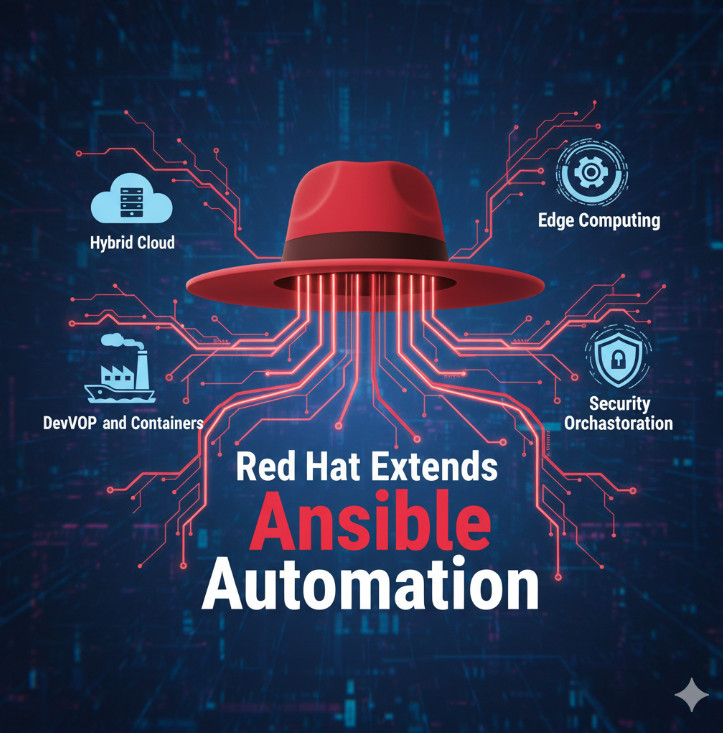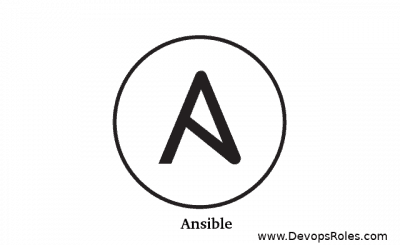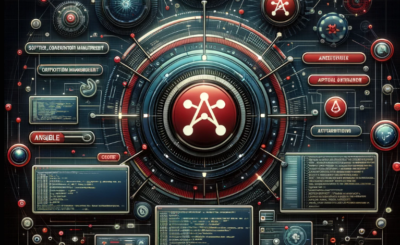In the ever-accelerating world of digital transformation, the complexity of IT environments is growing at an exponential rate. Hybrid clouds, edge computing, and the pervasive integration of artificial intelligence are no longer futuristic concepts but the daily reality for IT professionals. This intricate tapestry of technologies demands a new paradigm of automation—one that is not just reactive but predictive, not just scripted but intelligent, and not just centralized but pervasive. Recognizing this critical need, Red Hat extends Ansible Automation with a bold and ambitious new scope, fundamentally reshaping what’s possible in the realm of IT automation and management.
For years, Red Hat Ansible Automation Platform has been the de facto standard for automating provisioning, configuration management, and application deployment. Its agentless architecture, human-readable YAML syntax, and vast ecosystem of modules have empowered countless organizations to streamline operations, reduce manual errors, and accelerate service delivery. However, the challenges of today’s IT landscape demand more than just traditional automation. They require a platform that can intelligently respond to events in real-time, harness the power of generative AI to democratize automation, and seamlessly extend its reach from the core datacenter to the farthest edge of the network. This article delves into the groundbreaking extensions to the Ansible Automation Platform, exploring how Red Hat is pioneering the future of autonomous IT operations and providing a roadmap for businesses to not only navigate but thrive in this new era of complexity.
Table of Contents
- 1 The Next Frontier: How Red Hat Extends Ansible Automation for the AI-Driven Era
- 1.1 Ansible Lightspeed with IBM Watson Code Assistant: The Dawn of Generative AI in Automation
- 1.2 Event-Driven Ansible: From Proactive to Responsive Automation
- 1.3 Expanding the Automation Universe: New Content Collections and Integrations
- 1.4 Ansible at the Edge: Automating the Distributed Enterprise
- 2 Frequently Asked Questions (FAQ)
- 3 Conclusion: A New Era of Intelligent Automation
The Next Frontier: How Red Hat Extends Ansible Automation for the AI-Driven Era
The core of Ansible’s expanded vision lies in its deep integration with artificial intelligence and its evolution into a more responsive, event-driven platform. This isn’t merely about adding a few new features; it’s a strategic realignment to address the fundamental shifts in how IT is managed and operated. The new scope of Ansible Automation is built upon several key pillars, each designed to tackle a specific set of modern IT challenges.
Ansible Lightspeed with IBM Watson Code Assistant: The Dawn of Generative AI in Automation
One of the most transformative extensions to the Ansible Automation Platform is the introduction of Ansible Lightspeed with IBM Watson Code Assistant. This generative AI service, born from the erstwhile Project Wisdom, is designed to revolutionize how Ansible content is created, maintained, and adopted across an organization.
From Novice to Expert: Democratizing Ansible Playbook Creation
Traditionally, writing robust and efficient Ansible Playbooks required a significant level of expertise in both Ansible’s syntax and the intricacies of the target systems. Ansible Lightspeed dramatically lowers this barrier to entry by allowing users to generate Ansible tasks and even entire Playbooks using natural language prompts. This has profound implications for productivity and inclusivity:
- For the beginner: A system administrator who understands the desired outcome but is unfamiliar with Ansible’s modules and syntax can simply describe the task in plain English (e.g., “create a new EC2 instance in AWS with a specific VPC and security group”) and receive a syntactically correct and functional Ansible task as a starting point.
- For the expert: Experienced automators can accelerate their workflow by offloading the creation of boilerplate code and focusing on the more complex and strategic aspects of their automation. This also helps in discovering new modules and best practices they might not have been aware of.
Advanced Playbook Generation and Code Explanation
Ansible Lightspeed goes beyond simple task generation. With its deep integration into Visual Studio Code via the Ansible extension, it provides a seamless and interactive development experience. Users can generate multi-task Playbooks, and crucially, request explanations for existing Ansible code. This “explainability” feature is invaluable for training new team members, debugging complex Playbooks, and ensuring a consistent understanding of automation logic across the organization.
Example: Generating a Multi-Task Playbook with Ansible Lightspeed
A developer could input the following prompt into the Ansible Lightspeed interface in VS Code:
# ansible-lightspeed prompt
# - Install the latest version of Nginx
# - Create a new index.html file with the content "Welcome to our new web server"
# - Start and enable the Nginx service
Ansible Lightspeed, powered by Watson Code Assistant’s fine-tuned model trained on vast amounts of Ansible Galaxy content, would then generate a complete and contextually aware Playbook:
YAML
---
- name: Deploy and configure Nginx web server
hosts: webservers
become: true
tasks:
- name: Install the latest version of Nginx
ansible.builtin.package:
name: nginx
state: latest
- name: Create a custom index.html file
ansible.builtin.copy:
content: "Welcome to our new web server"
dest: /usr/share/nginx/html/index.html
mode: '0644'
- name: Start and enable the Nginx service
ansible.builtin.service:
name: nginx
state: started
enabled: yes
Model Customization: Tailoring AI to Your Organization’s Needs
Recognizing that every organization has its own unique automation patterns, best practices, and custom modules, Red Hat and IBM have enabled model customization for Ansible Lightspeed. This allows enterprises to train the Watson Code Assistant model on their own private Ansible content. The result is a generative AI service that provides recommendations aligned with the organization’s specific operational standards, further improving the quality, accuracy, and relevance of the generated code.
Event-Driven Ansible: From Proactive to Responsive Automation
While traditional Ansible excels at executing predefined workflows, the dynamic nature of modern IT environments requires a more reactive and intelligent approach. This is where Event-Driven Ansible comes into play, a powerful extension that enables the platform to listen for and automatically respond to events from a wide range of sources across the IT landscape.
The Architecture of Responsiveness: Rulebooks, Sources, and Actions
Event-Driven Ansible introduces the concept of Ansible Rulebooks, which are YAML-defined sets of rules that link event sources to specific actions. The architecture is elegantly simple yet incredibly powerful:
- Event Sources: These are plugins that connect to various monitoring, observability, and IT service management tools. There are out-of-the-box source plugins for a multitude of platforms, including AWS, Microsoft Azure, Google Cloud Platform, Kafka, webhooks, and popular observability tools like Dynatrace, Prometheus, and Grafana.
- Rules: Within a rulebook, you define conditions that evaluate the incoming event data. These conditions can be as simple as checking for a specific status code or as complex as a multi-part logical expression that correlates data from different parts of the event payload.
- Actions: When a rule’s condition is met, a corresponding action is triggered. This action can be running a full-fledged Ansible Playbook, executing a specific module, or even posting a new event to another system, creating a chain of automated workflows.
Practical Use Cases for Event-Driven Ansible
The applications of Event-Driven Ansible are vast and span across numerous IT domains:
- Self-Healing Infrastructure: If a monitoring tool detects a failed web server, Event-Driven Ansible can automatically trigger a Playbook to restart the service, provision a new server, and update the load balancer, all without human intervention.Example: A Simple Self-Healing RulebookYAML
--- - name: Monitor web server health hosts: all sources: - ansible.eda.url_check: urls: - https://www.example.com delay: 30 rules: - name: Restart Nginx on failure condition: event.url_check.status == "down" action: run_playbook: name: restart_nginx.yml - Automated Security Remediation: When a security information and event management (SIEM) system like Splunk or an endpoint detection and response (EDR) tool such as CrowdStrike detects a threat, Event-Driven Ansible can immediately execute a response Playbook. This could involve isolating the affected host by updating firewall rules, quarantining a user account, or collecting forensic data for further analysis.
- FinOps and Cloud Cost Optimization: Event-Driven Ansible can be used to implement sophisticated FinOps strategies. By listening to events from cloud provider billing and usage APIs, it can automatically scale down underutilized resources during off-peak hours, decommission idle development environments, or enforce tagging policies to ensure proper cost allocation.
- Hybrid Cloud and Edge Automation: In distributed environments, Event-Driven Ansible can react to changes in network latency, resource availability at the edge, or synchronization issues between on-premises and cloud resources, triggering automated workflows to maintain operational resilience.
Expanding the Automation Universe: New Content Collections and Integrations
The power of Ansible has always been in its extensive ecosystem of modules and collections. Red Hat is supercharging this ecosystem with a continuous stream of new, certified, and validated content, ensuring that Ansible can automate virtually any technology in the modern IT stack.
AI Infrastructure and MLOps
A key focus of the new content collections is the automation of AI and machine learning infrastructure. With new collections for Red Hat OpenShift AI and other popular MLOps platforms, organizations can automate the entire lifecycle of their AI/ML workloads, from provisioning GPU-accelerated compute nodes to deploying and managing complex machine learning models.
Networking and Security Automation at Scale
Red Hat continues to invest heavily in network and security automation. Recent updates include:
- Expanded Cisco Integration: With a 300% expansion of the Cisco Intersight collection, network engineers can automate a wide range of tasks within the UCS ecosystem.
- Enhanced Multi-Vendor Support: New and updated collections for vendors like Juniper, F5, and Nokia ensure that Ansible remains a leading platform for multi-vendor network automation.
- Validated Security Content: Validated content for proactive security scenarios with Event-Driven Ansible enables security teams to build robust, automated threat response workflows.
Deepened Hybrid and Multi-Cloud Capabilities
The new scope of Ansible Automation places a strong emphasis on seamless hybrid and multi-cloud management. Enhancements include:
- Expanded Cloud Provider Support: Significant updates to the AWS, Azure, and Google Cloud collections, including support for newer services like Azure Arc and enhanced capabilities for managing virtual machines and storage.
- Virtualization Modernization: Improved integration with VMware vSphere and support for Red Hat OpenShift Virtualization make it easier for organizations to manage and migrate their virtualized workloads.
- Infrastructure as Code (IaC) Integration: Upcoming integrations with tools like Terraform Enterprise and HashiCorp Vault will further solidify Ansible’s position as a central orchestrator in a modern IaC toolchain.
Ansible at the Edge: Automating the Distributed Enterprise
As computing moves closer to the data source, the need for robust and scalable edge automation becomes paramount. Red Hat has strategically positioned Ansible Automation Platform as the ideal solution for managing complex edge deployments.
Overcoming Edge Challenges with Automation Mesh
Ansible’s Automation Mesh provides a flexible and resilient architecture for distributing automation execution across geographically dispersed locations. This allows organizations to:
- Execute Locally: Run automation closer to the edge devices, reducing latency and ensuring continued operation even with intermittent network connectivity to the central controller.
- Scale Rapidly: Easily scale automation capacity to manage thousands of edge sites, network devices, and IoT endpoints.
- Enhance Security: Deploy standardized configurations and automate patch management to maintain a strong security posture across the entire edge estate.
Real-World Edge Use Cases
- Retail: Automating the deployment and configuration of point-of-sale (POS) systems, in-store servers, and IoT devices across thousands of retail locations.
- Telecommunications: Automating the configuration and management of virtualized radio access networks (vRAN) and multi-access edge computing (MEC) infrastructure.
- Manufacturing: Automating the configuration and monitoring of industrial control systems (ICS) and IoT sensors on the factory floor.
Frequently Asked Questions (FAQ)
Q1: How does Ansible Lightspeed with IBM Watson Code Assistant ensure the quality and security of the generated code?
Ansible Lightspeed is trained on a vast corpus of curated Ansible content from sources like Ansible Galaxy, with a strong emphasis on best practices. The models are fine-tuned to produce high-quality, reliable automation code. Furthermore, it provides source matching, giving users transparency into the potential origins of the generated code, including the author and license. For organizations with stringent security and compliance requirements, the ability to customize the model with their own internal, vetted Ansible content provides an additional layer of assurance.
Q2: Can Event-Driven Ansible integrate with custom or in-house developed applications?
Yes, Event-Driven Ansible is designed for flexibility and extensibility. One of its most powerful source plugins is the generic webhook source, which can receive events from any application or service capable of sending an HTTP POST request. This makes it incredibly easy to integrate with custom applications, legacy systems, and CI/CD pipelines. For more complex integrations, it’s also possible to develop custom event source plugins.
Q3: Is Ansible still relevant in a world dominated by Kubernetes and containers?
Absolutely. In fact, Ansible’s role is more critical than ever in a containerized world. While Kubernetes excels at container orchestration, it doesn’t solve all automation challenges. Ansible is a perfect complement to Kubernetes for tasks such as:
- Provisioning and managing the underlying infrastructure for Kubernetes clusters, whether on-premises or in the cloud.
- Automating the deployment of complex, multi-tier applications onto Kubernetes.
- Managing the configuration of applications running inside containers.
- Orchestrating workflows that span both Kubernetes and traditional IT infrastructure, which is a common reality in most enterprises.
Q4: How does Automation Mesh improve the performance and reliability of Ansible Automation at scale?
Automation Mesh introduces a distributed execution model. Instead of all automation jobs running on a central controller, they can be distributed to execution nodes located closer to the managed infrastructure. This provides several benefits:
- Reduced Latency: For automation targeting geographically dispersed systems, running the execution from a nearby node significantly reduces network latency and improves performance.
- Improved Reliability: If the connection to the central controller is lost, execution nodes can continue to run scheduled jobs, providing a higher level of resilience.
- Enhanced Scalability: By distributing the execution load across multiple nodes, Automation Mesh allows the platform to handle a much larger volume of concurrent automation jobs.

Conclusion: A New Era of Intelligent Automation
The landscape of IT is in a state of constant evolution, and the tools we use to manage it must evolve as well. With its latest extensions, Red Hat extends Ansible Automation beyond its traditional role as a configuration management and orchestration tool. It is now a comprehensive, intelligent automation platform poised to tackle the most pressing challenges of the AI-driven, hybrid cloud era. By seamlessly integrating the power of generative AI with Ansible Lightspeed, embracing real-time responsiveness with Event-Driven Ansible, and continuously expanding its vast content ecosystem, Red Hat is not just keeping pace with the future of IT—it is actively defining it. For organizations looking to build a more agile, resilient, and innovative IT operation, the ambitious new scope of the Red Hat Ansible Automation Platform offers a clear and compelling path forward.

